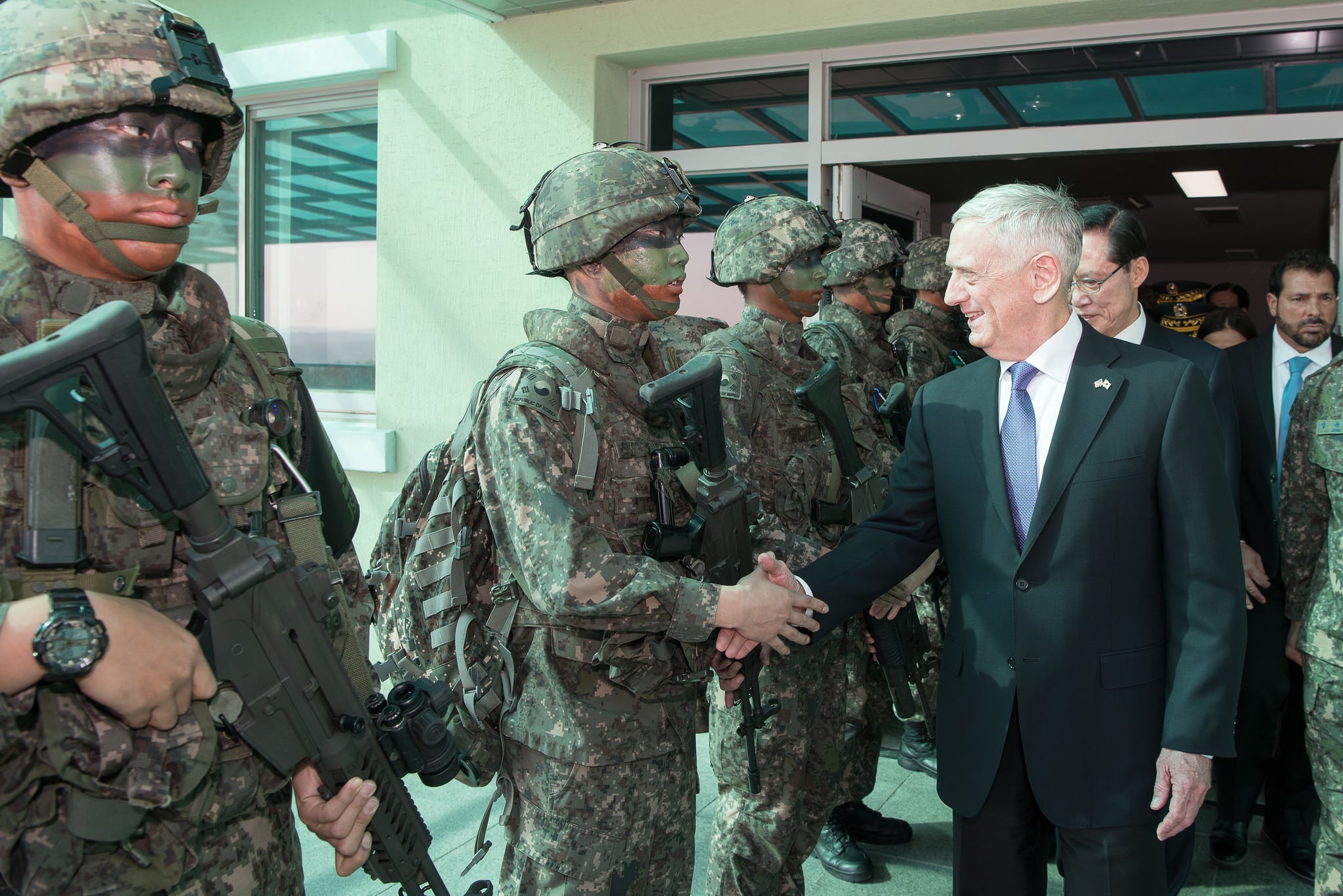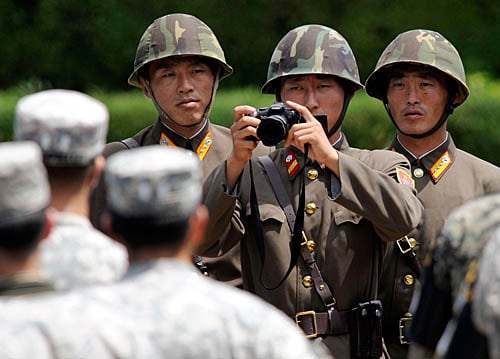As North Korean and South Korean leaders gear up for a summit next week, the two countries are reportedly negotiating a peace agreement that could end the Korean War, which technically remains a 68-year-old conflict that was never resolved.
However, any deal between the two Koreas is unlikely to change the mission of about 23,000 troops along the Korean Peninsula. And more importantly, the south can’t actually sign a peace treaty on its own.
“There may be a bit of misconjecture at play here,” said Bruce Klingner, a senior research fellow on Northeast Asia at the Heritage Foundation.
“The Koreas themselves technically can’t sign a peace treaty, because the armistice was signed by China, North Korea and the United Nations command. South Korea wasn’t a signatory.”
Klingner was referring to the 1953 armistice that ended the fighting on the Korean peninsula and created the Korean demilitarized zone, or DMZ.
To officially end the war, Klingner said: “It would need formal U.N. action, the involvement of China and the United States as signatories and guarantors.”
Even if they did sign a peace treaty, that only removes the legal justification for having the U.N. command there. U.S. lawmakers may try to score political points by bringing American forces home, but that would leave South Korea still vulnerable.

“There is still a conventional military threat to the Republic of Korea,” Klingner said. “Even if you address the nuclear missile, chemical and biological threat, you still have a million-man army in North Korea, forward deployed near the Demilitarized Zone with mechanized corps, armored corps, and artillery corps in an offensive, not defensive, posture.”
Speculation about the future of the U.S. mission in Korea began early Tuesday morning, when South Korean President Moon Jae-In was quoted as saying he wanted to create permanent peace between the Koreas. Those comments were interpreted internationally ‘as they want to sign a peace treaty,’ Klingner said.
Adding to the Korean Peninsula buzz is the revelation that CIA Director Mike Pompeo recently traveled to North Korea to meet with leader Kim Jong Un, ahead of President Donald Trump’s own meeting with the hermit kingdom’s leader in the coming months.
That isn’t all that surprising, though, said retired Lt. Gen. James Dubik, a senior fellow at the Institute for the Study of War.
RELATED

“You would expect a senior administration official to meet with North Korean leaders prior to a presidential summit,” he said.
While Pompeo’s secret meeting is “not unprecedented,” Dubik said it indicates a seriousness of the talks ahead.
“The most likely outcome would be a possible peace deal and a recognition of the two Koreas as separate states,” he added. “And what amount of U.S. forces are able to remain in Korea would depend on the negotiations of many talks down the line.”
For the more than 23,000 active duty U.S. military personnel the Defense Department reports are in South Korea, their presence for now is all but guaranteed. In fact, it’s unlikely talks this summer will portend anything for U.S. troops along the DMZ for quite some time.

The highest ranking U.S. military leader in South Korea is Army Gen. Vincent Brooks. He wears three hats on the peninsula. He is the commander of U.S. Forces — Korea, U.N. Command and Combined Forces Command.
While a peace treaty may dissolve the U.N. Command, the other commands would remain, unless progressives in South Korea are successful in pushing America out. But even that would take quite some time.
As to what a peace deal would look like, Klingner said the reunification of Germany in the 1990s is a good example.
RELATED

East and West Germany, plus the occupying powers of the United States, France, Great Britain and the Soviet Union, gradually thinned out their conventional forces through the Treaty on Conventional Armed Forces in Europe, which Klingner was part of for a time.
“We capped the number of tanks, artillery and light armored vehicles … not only overall on the continent of Europe, but also in subzones, which made it less likely either side could do a standing start invasion,” Klingner said.
Similar to the agreements back then, how many, and what type, of U.S. troops will have to be removed in order to facilitate an eventual peace deal is still up in air.
Kyle Rempfer was an editor and reporter who has covered combat operations, criminal cases, foreign military assistance and training accidents. Before entering journalism, Kyle served in U.S. Air Force Special Tactics and deployed in 2014 to Paktika Province, Afghanistan, and Baghdad, Iraq.





